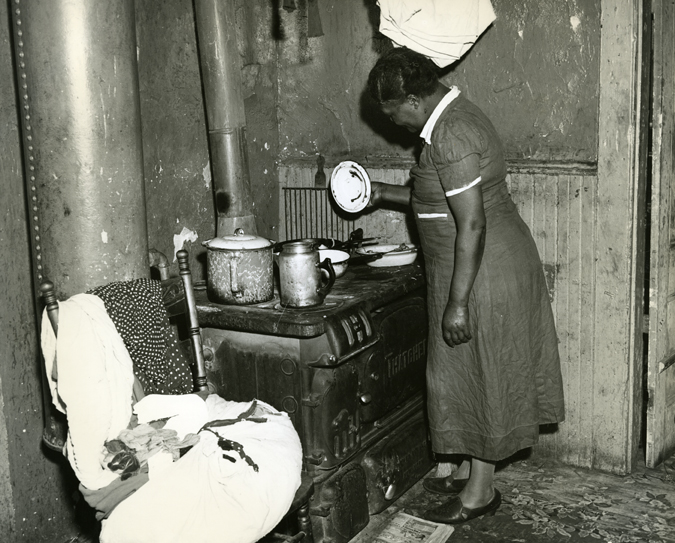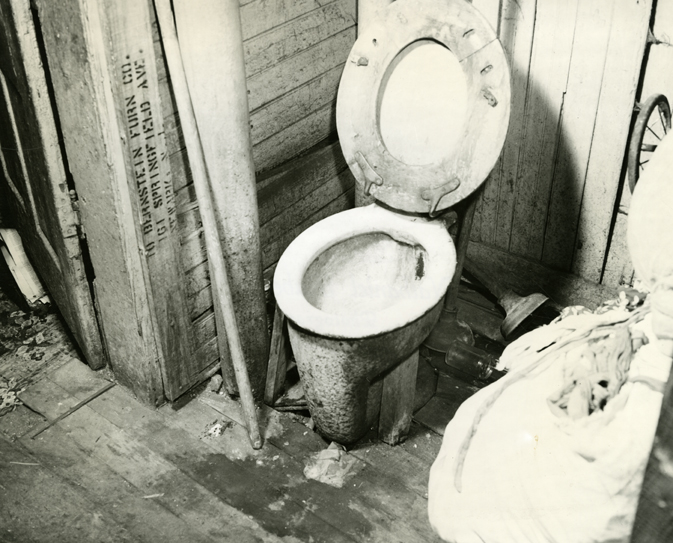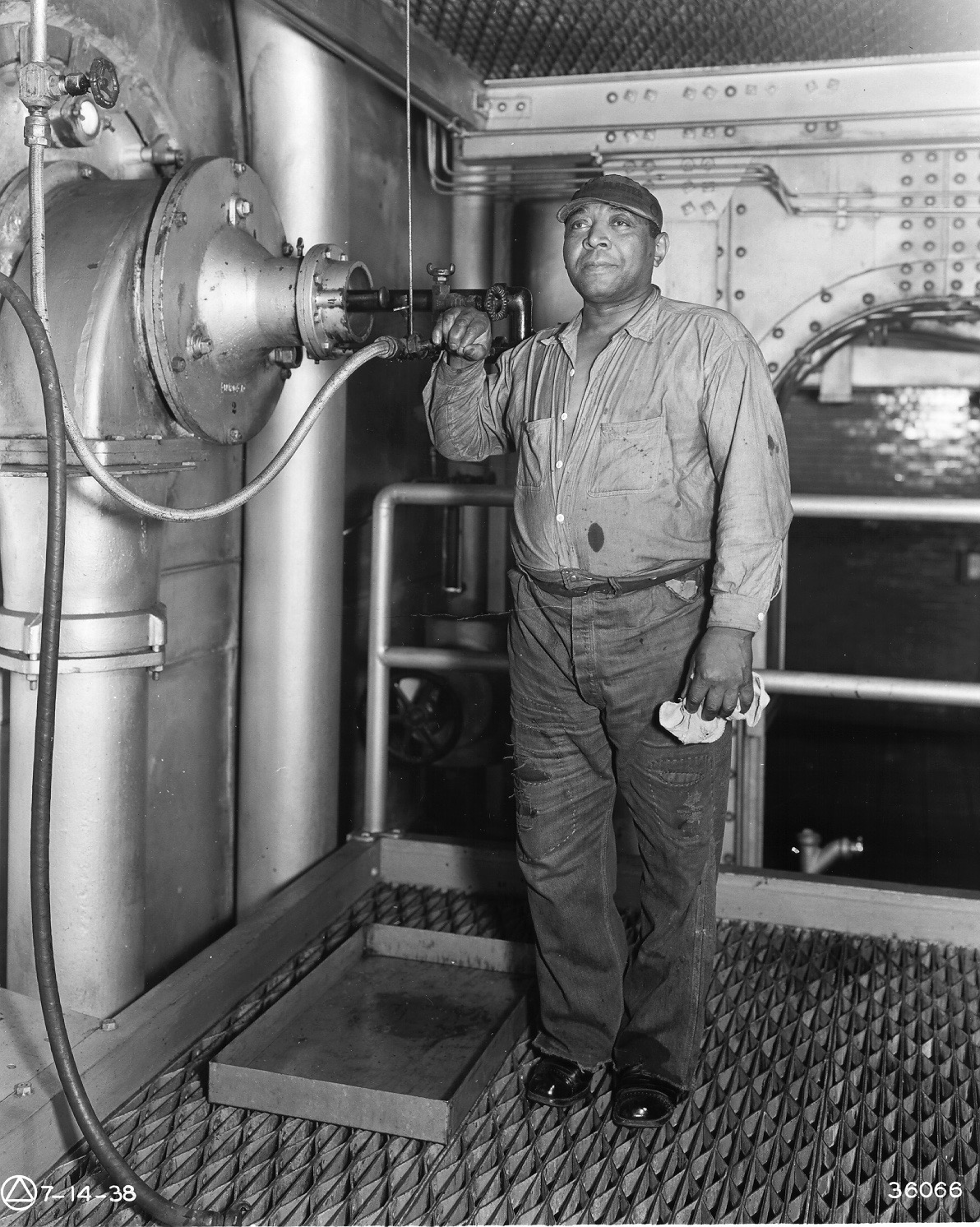Oscar Hill
Oscar Hill came to Newark from North Carolina with his wife, Agnes Hill, and her daughter, Bernice, in 1953. The three lived in an apartment above the Howard Bar, where Oscar Hill worked until it closed, after having previously tended bar at nearby Maxie’s. After his wife left him and her daughter sometime before 1957, Hill began seeing Alene Johnson in 1959 and the two later had four children together. By all accounts, Hill was a loving and devoted partner, father, and stepfather.
After the Howard Bar closed, Hill took a job at the Spring Manor Bar on Jones Street, where he was heading for work on July 14th when he was fatally shot by police. That morning, Hill and Johnson visited her mother in the Scudder Homes project before returning to the apartment they shared on Belmont Avenue. Despite Johnson’s pleas for him to stay home, given the ongoing conflicts in the streets, Hill dutifully left for work shortly before 5:00 P.M.
As Oscar Hill walked up Belmont Avenue and turned the corner onto Springfield Avenue, Newark police detective Frederick Toto was fatally shot outside of the Scudder Homes project after law enforcement exchanged fire with alleged “snipers” in the apartments. Toto’s shooting occurred shortly after police had opened fire on innocent people gathered in front of the project, killing Isaac Harrison and Robert Lee Martin. It remains uncertain if Detective Toto was struck by fire from someone inside the project, or by erratic shooting from National Guardsmen or State Police.
This was the scene that Oscar Hill was walking into as he tried to make his way to the Spring Manor Bar, just a few blocks away. As journalist Ron Porambo later wrote, “Immediately after Toto was hit in front of the projects three men were murdered by the Newark police in cold blood.” Hill was most likely the first of these men, followed by Cornelius Murray and Rufus Council.
Although the Grand Jury’s presentment states “there are no known witnesses to this shooting,” 29-year-old John Rutledge, who knew Hill from the Howard Bar, gave the following account to Porambo:
“Up at the corner on Belmont there was a police car parked and two policemen standing by it. Oscar kept on walking towards the police car. Just then another police car came out of Beacon Street to my right and turned up the avenue. Just as the car got to where Oscar was walking, I heard a shot. Oscar turned towards the car and went down on the sidewalk. When I seen him go down, that’s when I took off. I knew the police shot him and I thought they were gonna shoot me too.”
Hill then managed to get to his feet and “staggered down the avenue, finally sitting down in the broken-out front of a clothing store.” This was where his body was found by a Newark policeman and at some point photographed by a LIFE magazine photographer.
According to Porambo, “Hill’s death remained an unfathomable mystery. Homicide investigators were unable to come up with the location at which he was shot, even though an unidentified photograph of his body lying in the store window was circulated coast-to-coast in the July 28 issue of Life magazine. Ironically and sadly, Hill, one of the most peaceful of men, was photographed in death under circumstances that made him appear to be a looter.”
Oscar Hill was dead at the age of 50 after having been shot in the chest by police while he was on his way to work. Hill’s common-law wife of nine years, Alene Johnson, later said, “I found out he had been killed the next Friday, a week later. ‘Oh, God, no,’ I said. By that time I knew I was pregnant again. Oscar never knew.”
The Essex County Grand Jury found “no cause for indictment” of the officers involved.
References:
Ronald Porambo, No Cause for Indictment: An Autopsy of Newark
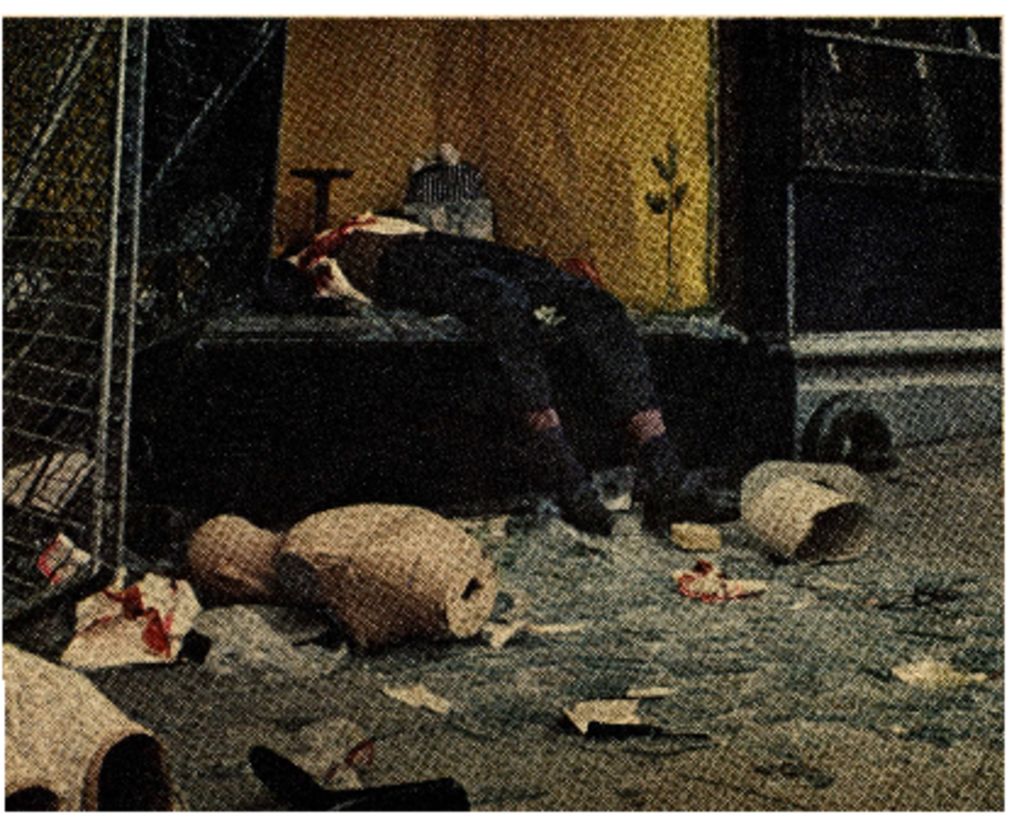
Caption from LIFE Magazine: “The Negro sprawled in the store window was shot in the side, died moments after this picture was taken.” According to Ron Porambo, “Ironically and sadly, Hill, one of the most peaceful of men, was photographed in death under circumstances that made him appear to be a looter.” — Credit: LIFE Magazine, July 28, 1967
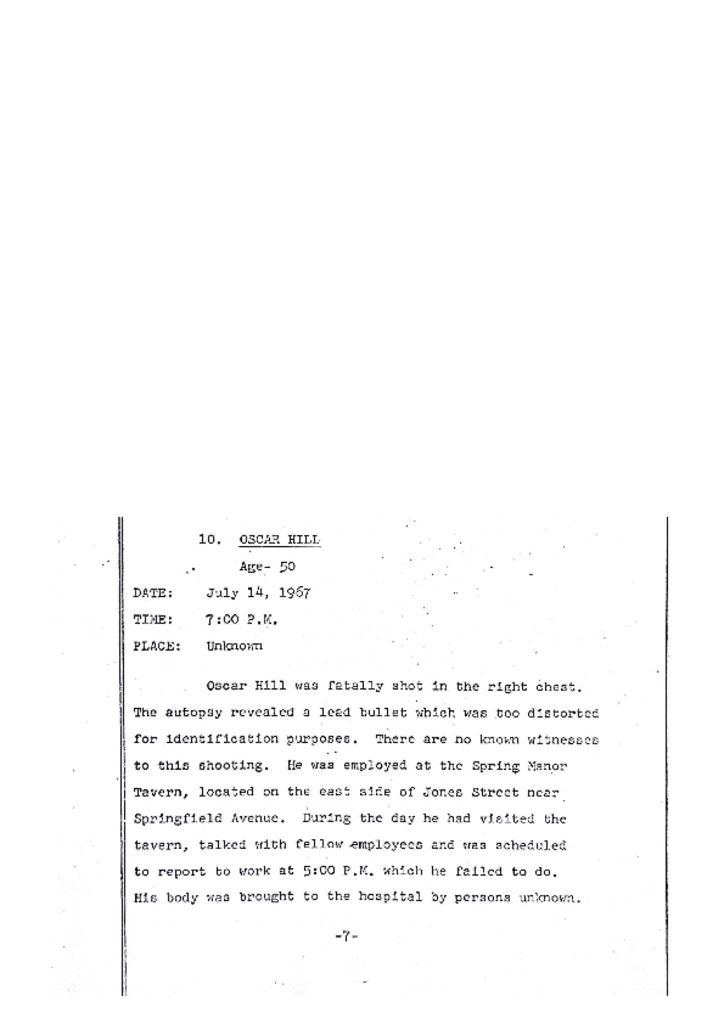
Grand Jury report describing the death of 50-year-old Oscar Hill on July 14, 1967, who was fatally shot in the chest with “no known witnesses.” The Grand Jury found “no cause for indictment.” — Credit: Newark Public Library

